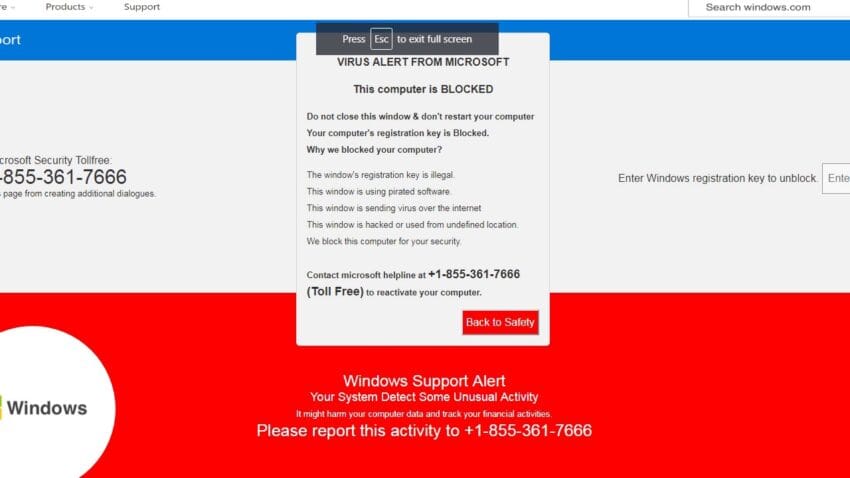
google search results redirect to a tech Recent reports indicate that Google search results have been redirecting users to a tech support scam, raising concerns about the integrity of search engine results and user safety online.
google search results redirect to a tech
Overview of the Incident
In a troubling development, users have discovered that searching for common tech-related queries on Google has led them to fraudulent tech support websites. These sites often impersonate legitimate companies, offering fake services and support to unsuspecting users. The issue has sparked significant concern among internet users, cybersecurity experts, and tech companies alike.
Nature of the Scam
The scam typically operates by presenting itself as a legitimate tech support service. Users searching for help with software issues, hardware problems, or general tech inquiries may find themselves directed to a site that appears professional and trustworthy. However, these sites are often designed to extract personal information or financial details from users.
Once on these fraudulent pages, users may encounter pop-up messages claiming that their devices are infected with malware or that they need immediate assistance. The urgency of these messages is a tactic used to pressure users into providing sensitive information or making payments for services that are unnecessary or non-existent.
How the Redirection Occurs
The redirection to these scam sites is believed to occur through manipulated search engine optimization (SEO) techniques. Scammers employ various strategies to improve the visibility of their fraudulent websites in search results. This can include the use of misleading keywords, fake reviews, and even the creation of seemingly legitimate content that misleads search algorithms.
Google’s algorithms are designed to prioritize reputable sources, but the sophistication of these scams poses a significant challenge. As scammers continue to refine their techniques, it becomes increasingly difficult for search engines to filter out malicious sites effectively.
Implications for Users
The implications of this incident are far-reaching. For everyday users, the risks associated with falling victim to such scams can be severe. Victims may experience financial loss, identity theft, and long-term damage to their devices due to malware infections.
Financial Risks
Many users who fall prey to these scams may be persuaded to pay for services that are either unnecessary or completely fictitious. This can lead to unauthorized charges on credit cards or bank accounts. In some cases, scammers may even request remote access to users’ computers, allowing them to install malicious software or steal sensitive information.
Identity Theft
In addition to financial risks, users may also face the threat of identity theft. Scammers often ask for personal information, including Social Security numbers, addresses, and banking details. Once this information is in the hands of criminals, it can be used for various nefarious purposes, including opening new accounts in the victim’s name or selling the information on the dark web.
Device Security Risks
Moreover, users who are tricked into downloading software from these scam sites may inadvertently install malware on their devices. This malware can compromise device security, leading to further vulnerabilities and potential data breaches. Users may find their devices running slower, experiencing crashes, or behaving erratically as a result of these infections.
Reactions from Stakeholders
The response to this incident has been swift, with various stakeholders expressing their concerns and calling for action. Cybersecurity experts, tech companies, and consumer advocacy groups have all weighed in on the issue.
Cybersecurity Experts
Cybersecurity professionals have emphasized the need for users to remain vigilant when searching for tech support online. They recommend that users verify the legitimacy of any website before providing personal information or making payments. This includes checking for secure connections (HTTPS), reading reviews from trusted sources, and being wary of unsolicited pop-ups or messages.
Tech Companies
Tech companies, including Google, have a vested interest in maintaining the integrity of their search results. In response to the growing concerns, Google has stated that it is continuously working to improve its algorithms to better identify and filter out fraudulent sites. The company has also encouraged users to report suspicious search results to help enhance the safety of its platform.
Consumer Advocacy Groups
Consumer advocacy organizations have called for increased transparency from tech companies regarding how search results are generated. They argue that users should be informed about the potential risks associated with online searches and should have access to resources that can help them identify scams. These groups are also advocating for stronger regulations to hold scammers accountable and protect consumers from such fraudulent activities.
Preventive Measures for Users
In light of these developments, users are encouraged to adopt several preventive measures to safeguard themselves against tech support scams.
Research Before Engaging
Before engaging with any tech support service, users should conduct thorough research. This includes:
- Verifying the company’s contact information and customer service options.
- Looking for reviews from reputable sources.
- Checking for any complaints filed against the company with consumer protection agencies.
Use Trusted Sources
Users should also rely on trusted sources for tech support. This may include official websites of software companies or well-known tech support providers. Engaging with these sources can significantly reduce the risk of falling victim to scams.
Be Cautious with Personal Information
It is crucial for users to be cautious about sharing personal information online. Legitimate tech support companies will not ask for sensitive information, such as passwords or Social Security numbers, unless absolutely necessary. Users should always question why such information is needed and how it will be used.
Utilize Security Software
Installing reputable security software can also help protect devices from malware and other threats. Many security programs offer features that can detect and block malicious websites, providing an additional layer of protection for users.
Conclusion
The recent incident involving Google search results redirecting to tech support scams highlights the ongoing challenges in maintaining online safety. As scammers continue to evolve their tactics, users must remain vigilant and informed. By taking proactive measures and relying on trusted sources, individuals can better protect themselves from falling victim to these fraudulent schemes. The collaboration between tech companies, cybersecurity experts, and consumer advocacy groups will be essential in combating these threats and ensuring a safer online experience for all.
Source: Original report
Was this helpful?
Last Modified: September 8, 2025 at 6:32 pm
2 views















